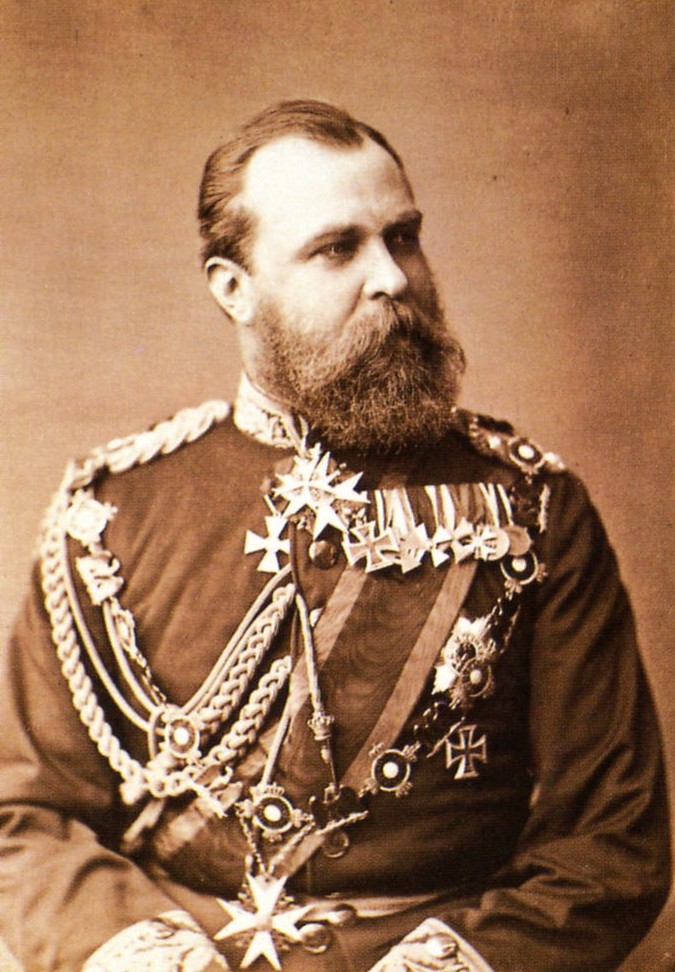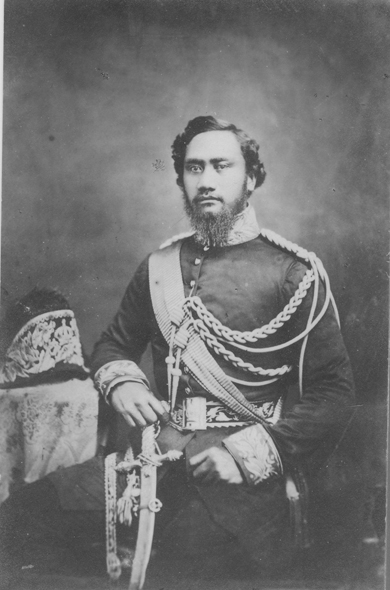© Unofficial Royalty 2024

Victoria of Saxe-Coburg-Saalfeld, Duchess of Kent; Credit – Wikipedia
March 16, 1485 – Death of Anne Neville, Queen of England, wife of King Richard III of England, at Palace of Westminster in London, England; buried at Westminster Abbey in London, England
Anne was the wife of Edward of Westminster, Prince of Wales (son of King Henry VI) and the wife of King Richard III. Born Lady Anne Neville, she was the younger of the two daughters of Richard Neville, 16th Earl of Warwick and Lady Anne Beauchamp. Anne’s father, known as “the Kingmaker,” was one of the major players in the Wars of the Roses, originally on the Yorkist side but later switching to the Lancastrian side. Both Anne’s parents were descendants of King Edward III of England. Anne died of tuberculosis eleven months after the death of her only child, Edward, Prince of Wales. Her husband Richard III was killed at the Battle of Bosworth five months after her death.
Unofficial Royalty: Anne Neville, Queen of England
March 16, 1688 – Birth of Christina Sophia of East Frisia, Princess of Schwarzburg-Rudolstadt, second of the two wives of Friedrich Anton, Prince of Schwarzburg-Rudolstadt, in Bayreuth, then in the Margraviate of Brandenburg-Bayreuth, now in the German state of Bavaria
Princess Christina Sophia of East Frisia and Friedrich Anton, Prince of Schwarzburg-Rudolstadt married in 1729, but their marriage was childless. However, Christina Sophia was the stepmother to her husband’s two surviving children from her husband’s first marriage. During Christina Sophia’s marriage to Friedrich Anton, her husband issued letters of protection to Jewish families and allowed them to settle in Schwarzburg-Rudolstadt. These families developed into the Jewish community of the Principality of Schwarzburg-Rudolstadt.
Unofficial Royalty: Christina Sophia of East Frisia, Princess of Schwarzburg-Rudolstadt
March 16, 1737 – Death of Erdmuthe of Dietrichstein, Princess of Liechtenstein, wife of her first cousin Hans-Adam I, Prince of Liechtenstein, in Vienna, then in the Duchy of Austria, now in Austria; buried in the Old Crypt at Chuch of the Nativity of the Virgin Mary in Brno, Moravia, now Vranov, Czech Republic.
In 1681, nineteen-year-old Erdmuthe married her nineteen-year-old first cousin Hans-Adam, heir to the Principality of Liechtenstein. The couple had eleven children but all their sons predeceased Hans-Adam. Hans-Adam died in 1712, at the age of 49. After the death of her husband, Erdmuthe spent most of her time in Vienna and in Judenau-Baumgarten, which was owned by the House of Liechtenstein and where Erdmuthe founded a hospital. She devoted herself to philanthropic activities, including providing shelters for the poor. Erdmuthe survived her husband by twenty-five years, dying on March 16, 1737, in Vienna, Austria at the age of 84.
Unofficial Royalty: Erdmuthe of Dietrichstein, Princess of Liechtenstein
March 16, 1792 – King Gustav III of Sweden shot by Count Jacob Johan Ankarstrom at a masked ball at the Royal Opera House in Stockholm, Sweden; he died two weeks later
King Gustav III of Sweden is best known for being mortally wounded during a masked ball at the Royal Opera House in Stockholm, Sweden, and dying thirteen days later. The incident was the subject of Giuseppe Verdi’s 1859 opera Un Ballo in Maschera (A Masked Ball). Gustav was the eldest son of King Adolf Frederik of Sweden and Louisa Ulrika of Prussia, daughter of King Friedrich Wilhelm I of Prussia and Sophia Dorothea of Hanover, daughter of King George I of Great Britain. In 1766, Gustav married Princess Sophia Magdalena of Denmark and the couple had one surviving son. Gustav became King of Sweden upon the death of his father in 1771. In 1772, Gustav arranged for a coup d’état known as the Revolution of 1772 or Coup of Gustav III. The coup d’état reinstated an absolute monarchy and ended parliamentary rule. The Russo-Sweden War and the implementation of the Union and Security Act in 1789, which gave the king more power and abolished many of the privileges of the nobility, contributed to the increasing hatred of Gustav III, which had existed among the nobility since the 1772 coup. In the winter of 1791-1792, a conspiracy was formed within the nobility to kill the king and reform the government. Read more about the assassination in the link below.
Unofficial Royalty: Assassination of Gustav III, King of Sweden
Unofficial Royalty: King Gustav III of Sweden
March 16, 1809 – Birth of Emma Portman, Baroness Portman, Lady of the Bedchamber to Queen Victoria
Born Emma Lascelles, daughter of Henry Lascelles, 2nd Earl of Harewood, she married Edward Portman, Baron Portman. Emma first met Queen Victoria in 1835 when the young Princess visited Harewood House, the home of the Lascelles family. Despite their ten-year age difference, the two began a friendship that would last until Emma’s death. So it was very fitting that shortly after her accession, in June 1837, Victoria wrote to Emma asking her to become one of her Ladies in Waiting. She served as Lady of the Bedchamber to Queen Victoria from 1837 to 1851, and then as an Extra Lady between 1851 and 1865.
Unofficial Royalty: Emma Portman, Baroness Portman
March 16, 1856 – Birth of Louis Napoléon, Prince Imperial, the only child of Napoleon III, Emperor of the French, in Paris, France
Full name: Napoléon Eugène Louis Jean Joseph
Exiled in England after the fall of his father, Louis Napoléon begged to participate in the Anglo-Zulu War in Africa. When the Anglo-Zulu War started in Africa, Louis wanted to take part. He was only allowed to do so after his mother approved and Queen Victoria intervened to get him a place in the British Army. On June 1, 1879, Louis participated in a nine-member reconnaissance mission that was surprised by forty Zulu warriors. Louis had not totally mounted his horse at the time of the attack, held on to the saddle as the horse started to run but fell off the horse. With his revolver in his hand, he started to run but the Zulus could run faster. The Zulus overtook him and mortally stabbed the 23-year-year old Louis.
Unofficial Royalty: Louis Napoléon, Prince Imperial
March 16, 1861 – Death of Victoria of Saxe-Coburg-Saalfeld, Duchess of Kent, mother of Queen Victoria of the United Kingdom, at Frogmore House in Windsor, England; buried at the Duchess of Kent’s Mausoleum at Frogmore, Windsor
In November of 1817, the death in childbirth of Princess Charlotte of Wales, the only legitimate grandchild of King George III, necessitated the marriages of the unmarried sons of King George III to provide an heir to the throne. Prince Edward, Duke of Kent (fourth son of King George III) married the 32-year-old widow Victoria of Saxe-Coburg-Saalfeld. At Kensington Palace in London, their only child, the future Queen Victoria, was born on May 24, 1819. Eight months later, Edward died. In March of 1861, after the Duchess of Kent had surgery on her arm to remove an ulcer, a severe infection developed. On March 15, 1861, Queen Victoria was notified that her mother was not expected to survive for more than a few hours. Victoria, Albert, and their daughter Alice immediately traveled from London to Windsor where the Duchess resided at Frogmore House near Windsor Castle. The Queen found her mother in a semi-coma and breathing with great difficulty. At 9:30 on the morning of March 16, 1861, the Duchess of Kent died at the age of 74 without regaining consciousness. Her mother’s death was the first of the two major deaths Queen Victoria had to endure in 1861. Her husband Prince Albert died in December.
Unofficial Royalty: Victoria of Saxe-Coburg-Saalfeld, Duchess of Kent
March 16, 1890 – Death of Princess Zorka of Montenegro, first wife of the future King Peter I of Serbia, in Cetinje, Montenegro; initially buried at the Cetinje Monastery in Cetinje, Montenegro, later her remains were moved to the Mausoleum of the Serbian Royal Family beneath St. George’s Church in Oplenac, Serbia
Zorka was the daughter of King Nicholas I of Montenegro and the sister of Milicia and Anastasia, who married Russian Grand Dukes and are best known for having introduced Empress Alexandra Feodorovna, wife of Nicholas II, Emperor of All Russia, to Grigori Rasputin in 1905. In 1883, Zorka married Peter Karađorđević, son and heir of the former Prince of Serbia, Alexander, who abdicated in 1858. Zorka and Peter had five children including the future King Alexander I of Yugoslavia. On March 16, 1890, 25-year-old Princess Zorka died while giving birth to her youngest child who also died. Thirteen years after her death, her husband would return the Karađorđević dynasty to the Serbian throne as King Peter I.
Unofficial Royalty: Princess Zorka of Montenegro
March 16, 1912 – Death of Louisa Montagu Douglas Scott, Duchess of Buccleuch and Queensberry, Queen Victoria’s Mistress of the Robes 1885–1886, 1885–1886, 1895–1901 and Queen Alexandra’s Mistress of the Robes 1901-1912, at Dalkeith Palace in Midlothian, Scotland; buried in the family crypt at The Church of St. Mary the Virgin, at Dalkeith Palace
Born Lady Louisa Hamilton, she was the daughter of James Hamilton, 1st Duke of Abercorn and married William Montagu Douglas Scott, 6th Duke of Buccleuch and 8th Duke of Queensberry. They are the grandparents of Princess Alice, Duchess of Gloucester and the great-great-grandparents of Sarah, Duchess of York. The Duchess of Buccleuch and Queensberry died at Dalkeith Palace in Midlothian, Scotland on March 16, 1912, aged 76.
Unofficial Royalty: Louisa Montagu Douglas Scott, Duchess of Buccleuch and Queensberry
March 16, 1963 – Death of Archduchess Elisabeth Marie of Austria, Princess of Windisch-Graetz, the only child of Crown Prince Rudolf of Austria, at Villa Habsburg in Vienna, Austria, buried at the Hütteldorfer Cemetery in Vienna, Austria
Elisabeth was the only child of Rudolf, Crown Prince of Austria and Stéphanie of Belgium. She was only six-year-old when her father was found shot to death with his mistress Baroness Mary von Vetsera in an apparent suicide pact. Imperial dislike of Elisabeth’s mother Stéphanie had been high, and as a result, her paternal grandfather, Emperor Franz Joseph of Austria took Elisabeth into his care. Following her mother’s remarriage to a Hungarian count in 1900, Elisabeth broke off all contact with her mother. In 1902, Elisabeth married Prince Otto of Windisch-Grätz. The couple had four children but the marriage had many problems. Elisabeth and Otto separated officially following World War I, and a battle over custody of their children followed. The two, however, did not legally divorce for nearly 30 years. After her separation, Elisabeth joined the Austrian Social Democratic Party and began a relationship with Leopold Petznak, a socialist leader. Her association with the Social Democratic Party and her devotion to Leopold earned Elisabeth the nickname of “the Red Archduchess.” Leopold and Elisabeth married in 1948 and remained together until his death in 1956. Elisabeth’s relationship with her two surviving children was poor, and she left them few possessions upon her death, choosing instead to leave the majority to the Austrian state.
Unofficial Royalty: Archduchess Elisabeth Marie of Austria, Princess of Windisch-Graetz
March 16, 1983 – Death of Freda Dudley Ward, mistress of King Edward VIII of the United Kingdom, in London, England
Freda Dudley Ward was the mistress of the future King Edward VIII of the United Kingdom from 1918 – 1934 while he was Prince of Wales.
Unofficial Royalty: Freda Dudley Ward, mistress of King Edward VIII of the United Kingdom
This article is the intellectual property of Unofficial Royalty and is NOT TO BE COPIED, EDITED, OR POSTED IN ANY FORM ON ANOTHER WEBSITE under any circumstances. It is permissible to use a link that directs to Unofficial Royalty.











